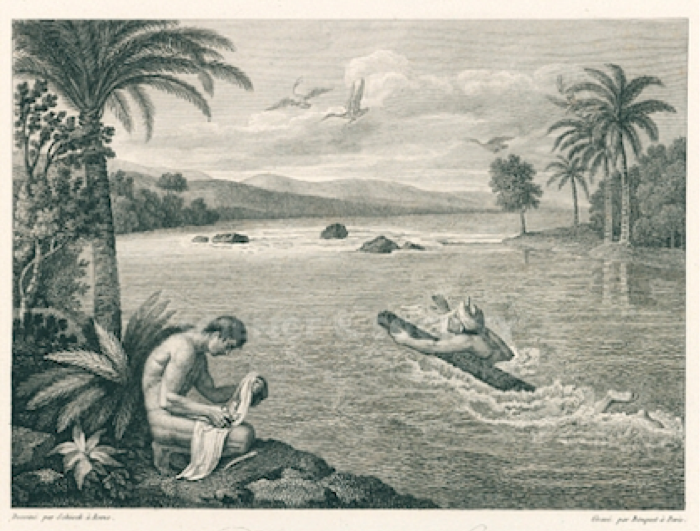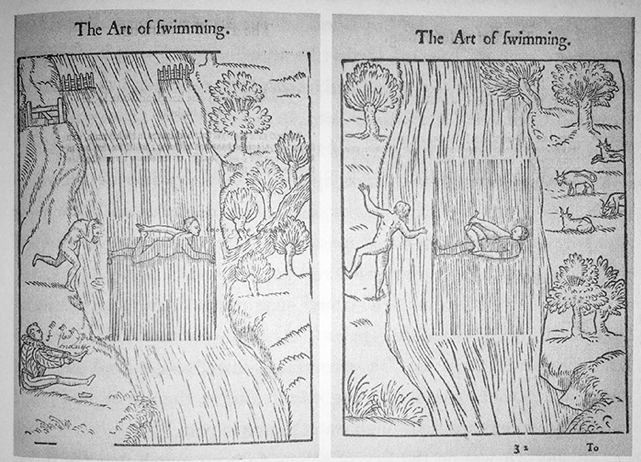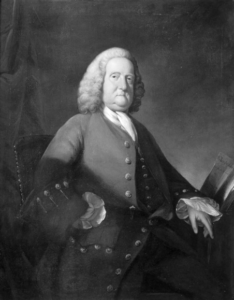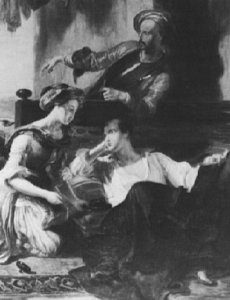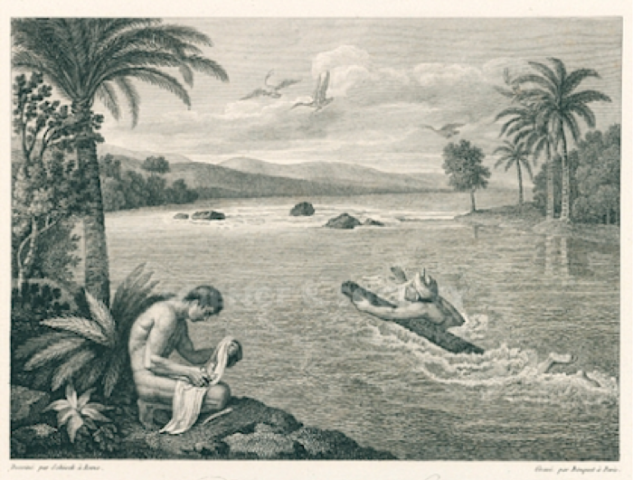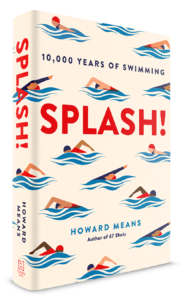This article is Part 2 of a six-part series adaptation from the book SPLASH! 10,000 Years of Swimming, written by Howard Means and published by Hachette Books.
The old joke holds that the Middle Ages were a thousand years without a bath. That’s an exaggeration, of course, but for the vast bulk of Europeans, the Middle Ages were a thousand years without a swim. The collapse of Rome in the 5th century robbed swimming of its great engineers. Sanitation collapsed. Prudery rose. Various plagues and the Black Death took their grim toll. The water again became filled with gods and demons as it was for primitive peoples. Plentiful evidence shows that swimming never missed a stroke during the same time in China and Japan, Tibet and into Persia, but on the British Isles and even among the Mediterranean countries, swimming sank like a stone and stayed on the bottom for a full millennium.
Everard Digby’s 1587 guide De Arte Natandi, or The Art of Swimming, and the many plagiarized versions that followed reintroduced the British and Europeans to the activity.
First, though, Digby felt obliged to suggest how to enter water and where best to swim — not, for example, in a pond following a pig slaughtering. Once Digby got his readers in the water, his advice was often quirky at best. In these two woodcuts, he focuses on “ornamental swimming” (left arm holding right foot — try it) and how to pare one’s toenails while floating downstream. One might ask: Why?
The revival of swimming in the English-speaking world owed much to three Founding Fathers, including Benjamin Franklin. While working in a London printinghouse in his early twenties, Franklin gained such a reputation as a swimmer that he briefly considered opening a swimming school in the city, rather than returning to the Colonies. Think of how that might have changed the history of the sport, and of the future America.
There’s no evidence that Richard Russell, another Founding Father of Swimming 2.0, ever swam a single stroke. In fact, he looks downright opposed to most activities. But Russell’s wildly popular 1750 tome, Dissertation Concerning the Use of Sea Water in Diseases of the Glands, made salt-water cures all the rage. This led to the rise of seaside English resorts like Brighton, which gave the revival of swimming something it desperately needed: an infrastructure.
The third of the Founding Fathers of “Swimming 2.0” is George Gordon, a.k.a. Lord Byron, shown here recovering amorously after swimming the Hellespont in 1810. Both the most famous poet and most famous swimmer of the first half of the 19th century — and the first truly modern celebrity — Byron put the whimsy into waves, the panache into plunges. His club foot, which made land sports challenging, might actually have helped with his breaststroke kick.
While Europeans struggled to relearn swimming, much of the rest of the world stroked merrily along. This drawing of a Peruvian aquatic mailman was based on a description by Alexander von Humboldt after his South American travels at the dawn of the 19th century. According to Humboldt, this anonymous mail carrier descended the River Chamaya and thence down the Amazon with the help of a log. He carried letters in his turban to keep them dry.
More From This Series
Adapted from SPLASH! 10,000 Years of Swimming,
By Howard Means,
Published by Hachette Books
Buy Now: https://bit.ly/ReadSplash.
About The Book
Choose a stroke and get paddling through the human history of swimming!
From man’s first recorded dip into what’s now the driest spot on earth to the splashing, sparkling pool party in your backyard, humans have been getting wet for 10,000 years. And for most of modern history, swimming has caused a ripple that touches us all–the heroes and the ordinary folk; the real and the mythic.
Splash! dives into Egypt, winds through ancient Greece and Rome, flows mostly underground through the Dark and Middle Ages (at least in Europe), and then reemerges in the wake of the Renaissance before taking its final lap at today’s Olympic games. Along the way, it kicks away the idea that swimming is just about moving through water, about speed or great feats of aquatic endurance, and shows you how much more it can be. Its history offers a multi-tiered tour through religion, fashion, architecture, sanitation and public health, colonialism, segregation and integration, sexism, sexiness, guts, glory, and much, much more.
Unique and compelling, Splash! sweeps across the whole of humankind’s swimming history–and just like jumping into a pool on a hot summer’s day, it has fun along the way.
